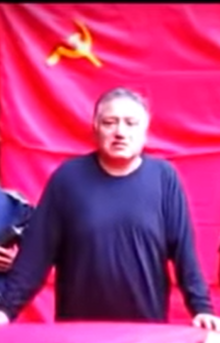
Peruvian Communist Rebel Leader “Jose” Palomino on Brink of Capture in VRAEM
Publication: Militant Leadership Monitor Volume: 13 Issue: 9
By:

In August, the Peruvian armed forces launched an operation targeting the base of former Shining Path commander, Victor Quispe Palomino, whose alias is “Jose.” As the Shining Path is now centered in Valle de los Ríos Apurímac, Ene, y Mantaro (Valley of the Apurimac Rivers), or VRAEM, the operation to target Palomino was also primarily being carried out in VRAEM. Palomino was “seriously injured” in the operation, but apparently survived (nationworldnews.com, August 14).
Palomino began his militant career in 1979 at the age of 19, when he was a student of anthropology at San Cristóbal de Huamanga National University. His decision to join the Shining Path, however, was not all that surprising considering the fact that his father, Martín Quispé Mendoza, was already a member of the group (elcomercio.pe, March 30, 2021). Moreover, Palomino’s brothers, Marco and Jorge Quispé, also joined the group, making it a family affair to join.
After joining Shining Path, Palomino participated in two of the group’s most notorious attacks in 1982 and 1983, respectively. The former attack at Vilkashuaman police station killed six police officers and the latter attack at Lucanmarca is widely considered one of South America’s worst civilian massacres, with 69 villagers, including children, killed (enterarse.com, September 6, 2021). That massacre was the beginning of the end for Shining Path’s hopes of inspiring a mass Communist revolution as the violent acts lost the support of the local population. Indeed, it was a miscalculation by founder and leader Abimael Guzmán to target villagers who were not sympathetic to the group so violently, and justice was served on Guzmán after his arrest in 1992 (he died in prison in 2021) (cbc.ca, October 13, 2006).
Palomino remained with Shining Path until 2018, although his break with the group was largely cosmetic. He simply formed a related organization, the Militarized Communist Party of Peru in VRAEM, which retained the same ideology but focused on drug smuggling in the cocaine-producing VRAEM (andina.pe, March 9). However, Palomino became even more isolated in 2020 when his brother, Jorge, who formed the new group with him, was killed in an operation that also resulted in the deaths of two Peruvian soldiers (elperuano.pe, March 30, 2021).
It was after Jorge’s death that the Second Supraprovincial Criminal Prosecutor’s Office Specialized in Human Rights, Interculturality, and Terrorism Crimes of Ayacucho ordered Palomino’s capture. The call for his arrest also indicated that Palomino had become the Shining Path leader as early as 1999. The leadership transition likely took place after Guzmán’s successor, Oscar Ramirez Durand, whose alias was “Feliciano,” was arrested (rpp.pe, September 2).
In the most recent August 19 large-scale army operation to capture Palomino in VRAEM, the army reported that 15 Shining Path members were killed, but Palomino escaped capture (andina.pe, September 3). The army also secured the area around his base, which it believes will guarantee that he cannot return there. Moreover, it is possible the operation will ultimately lead to Palomino’s capture because his personal items were captured by the army, including his computer, glasses, and clothing (mercopress.com, August 19).
With his near capture, it appears Palomino’s days are numbered. At the same time, the army is planning to turn 40 military bases in VRAEM into development centers to improve the economy of the region (perureports.com, May 5). This, in turn, could reduce the already low recruitment into the Shining Path and related drug trafficking groups like Palomino’s (gob.pe, April 29). In fact, it is only the growing irrelevancy of the Communist rebels, despite their continued drug trafficking and occasional attacks, that may afford Palomino an opportunity to escape capture while the army’s priorities are focused elsewhere, such as developing VRAEM economically.



